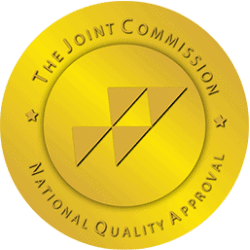How Socioeconomic Factors Play a Role in Adolescent Mental Health and Substance Abuse
Adolescence is a critical developmental stage marked by rapid physical, emotional, and social changes. It is also a period of heightened vulnerability to mental health challenges and substance abuse. Depression, anxiety, self-harm, and experimentation with drugs or alcohol often first emerge during teenage years. While biological and psychological factors play important roles, it is impossible to understand these issues fully without considering the broader socioeconomic context in which teenagers grow up.
Socioeconomic status (SES)—typically defined by income, education, and occupation—shapes virtually every aspect of adolescent life. It influences the quality of housing, neighborhood conditions, parental support, access to healthcare, and educational opportunities. For teenagers, these factors translate into either protective environments that support healthy development or high-risk contexts that heighten vulnerability to stress, poor mental health, and substance use.
This post examines how socioeconomic factors contribute to mental health and substance abuse among adolescents. It explores poverty, family dynamics, neighborhoods, schools, cultural inequalities, resilience, and policy responses. The central argument is that socioeconomic disadvantage is one of the most powerful and persistent predictors of mental health struggles and substance abuse in teenagers, operating through multiple pathways that intersect and reinforce one another.
Socioeconomic Status (SES) as a Determinant of Adolescent Mental Health
Socioeconomic status is more than a measure of wealth. It is a structural condition that influences a teenager’s opportunities, environment, and stressors. High SES families typically enjoy greater stability, safer neighborhoods, access to quality education, and healthcare resources. By contrast, low SES families face chronic financial strain, limited access to mental health services, and exposure to stressors that erode resilience.
Researchers identify several pathways linking SES to adolescent mental health and substance abuse:
- Material deprivation: Lack of access to food, healthcare, safe housing, and extracurricular activities increases vulnerability.
- Chronic stress: Financial insecurity produces long-term stress that impacts brain development and emotional regulation.
- Social exclusion: Low SES adolescents often face stigma and marginalization, compounding feelings of inadequacy.
- Coping mechanisms: Substance use may emerge as a way to cope with stress, trauma, or lack of recreational alternatives.
In short, socioeconomic status is not just background context; it actively shapes the trajectory of adolescent well-being.
 Poverty and Economic Stress
Poverty and Economic Stress
Poverty is perhaps the most visible socioeconomic factor influencing teenage mental health and substance use.
Living in poverty means more than low income—it involves instability, insecurity, and exposure to cumulative stressors.
Chronic financial stress within families creates environments where adolescents absorb parental anxiety and conflict. Parents working multiple jobs may have less time for supervision, emotional support, and engagement. This absence increases the likelihood of adolescents turning to peers for support, sometimes resulting in exposure to risky behaviors.
Teenagers in low-income families are at heightened risk of depression and anxiety, partly because of the constant awareness of economic limitations compared to their peers. The stress of “not fitting in” socially or being excluded from activities due to financial barriers reinforces feelings of isolation.
Substance use can emerge as a coping strategy. Adolescents facing chronic stress or emotional pain may turn to alcohol, tobacco, or drugs for temporary relief. Studies consistently show higher rates of smoking and early initiation of alcohol use in low-income youth populations.
Neighborhood and Environmental Factors
The environment in which adolescents live profoundly affects their mental health and risk of substance use. Socioeconomic disparities often determine neighborhood quality.
- Exposure to crime and violence: Teenagers growing up in disadvantaged neighborhoods are more likely to witness violence, which increases rates of post-traumatic stress, depression, and aggression. Substance use may become a maladaptive coping strategy.
- Lack of safe recreational spaces: Wealthier areas often provide parks, sports programs, and structured activities. Poor neighborhoods may lack these resources, leaving teenagers with fewer positive outlets for stress and socialization.
- Access to healthcare: Disadvantaged areas frequently lack adequate healthcare infrastructure, making it difficult for teens to access mental health counseling or treatment for substance abuse.
Urban adolescents may face overcrowded schools, unsafe environments, and constant stressors, while rural adolescents face different socioeconomic barriers—such as isolation, lack of services, and limited recreational alternatives—that also heighten risks of depression and substance misuse.
Family Dynamics and Parental Influence
Family is the primary socializing unit for adolescents, and socioeconomic stress shapes family dynamics profoundly.
- Parenting styles: Parents under chronic financial strain may become more authoritarian, inconsistent, or emotionally unavailable. These patterns contribute to low self-esteem and emotional difficulties in adolescents.
- Parental substance use: Substance abuse often runs in families. Parents coping with poverty-related stress through alcohol or drugs may model similar behaviors for their children.
- Single-parent households: Economic hardship is more common in single-parent families. The combination of reduced supervision, financial strain, and parental stress correlates strongly with higher rates of adolescent depression, anxiety, and substance use.
Intergenerational cycles of substance abuse and mental health struggles are often reinforced by the same socioeconomic conditions that hinder recovery.
Education and School Environment
Schools play a dual role in shaping adolescent outcomes.
They can serve as protective environments offering stability and support, or as high-stress settings that exacerbate socioeconomic inequalities.
- Quality of education: Underfunded schools in low-income neighborhoods often lack mental health counselors, extracurricular programs, and safe facilities. Students in these schools face more barriers to academic achievement, which contributes to stress and feelings of hopelessness.
- Peer dynamics: Socioeconomic disadvantage is associated with higher rates of bullying, stigma, and peer pressure. For teenagers already struggling with low self-esteem, these experiences increase the likelihood of depression and substance use.
- Substance availability: Research shows that disadvantaged schools often face higher exposure to drug dealing and peer networks that normalize risky behavior.
In contrast, well-funded schools not only provide better academic resources but also buffer adolescents against mental health struggles through extracurricular engagement, counseling services, and supportive staff.
Cultural and Social Inequalities
Socioeconomic disadvantage rarely exists in isolation—it intersects with race, ethnicity, gender, and other social categories.
- Systemic racism and SES: Minority teenagers often experience compounded disadvantages: poverty combined with discrimination, leading to heightened psychological distress.
- Stigma and access barriers: Even when adolescent mental health services exist, cultural stigma about seeking help can deter adolescents, particularly in marginalized communities.
- Intersectionality: Teenagers who are both socioeconomically disadvantaged and part of marginalized groups (e.g., LGBTQ+ youth from low-income households) face especially high risks for mental health problems and substance abuse.
Thus, socioeconomic status interacts with broader patterns of inequality, deepening vulnerabilities.
 Protective Factors and Resilience
Protective Factors and Resilience
Despite these challenges, many adolescents in low-SES environments show resilience and avoid substance abuse or long-term mental health struggles. This resilience is often supported by protective factors:
- Community programs: Youth centers, after-school activities, and mentorship programs provide alternatives to risky behaviors.
- Supportive relationships: Even one stable, caring adult—whether a parent, teacher, or mentor—can buffer adolescents against stress.
- Extracurricular involvement: Sports, arts, and community projects provide both structure and purpose, reducing the likelihood of substance use.
These protective mechanisms highlight that socioeconomic disadvantage does not doom teenagers to poor outcomes—intervention and support matter.
Policy Implications and Solutions for Adolescent Mental Health
Addressing the role of socioeconomic factors in adolescent mental health and substance abuse requires systemic solutions.
- Expanding access to mental health services: Low-income communities need affordable, culturally sensitive mental health clinics, with school-based counselors available to teenagers.
- School-based prevention programs: Programs that teach coping skills, stress management, and substance abuse prevention are highly effective when implemented early.
- Reducing structural inequality: Policies addressing poverty—such as increasing minimum wage, improving housing stability, and expanding food security programs—indirectly reduce adolescent mental health risks.
- Community-based initiatives: Investment in safe recreational spaces, youth clubs, and mentorship opportunities creates protective environments that counteract socioeconomic stressors.
Socioeconomic disparities will not disappear overnight, but targeted interventions can significantly reduce their impact on teenagers.
Conclusion
Adolescence is a vulnerable period in which adolescent mental health and substance use patterns often take root. Socioeconomic status profoundly shapes these outcomes, influencing everything from family dynamics and neighborhood safety to school quality and healthcare access. Poverty, inequality, and social exclusion act as risk factors for depression, anxiety, and early substance use, while protective community and family supports can foster resilience.
Ultimately, the relationship between socioeconomic factors and adolescent well-being underscores the need for systemic change. Interventions must go beyond treating individual symptoms to addressing the structural inequalities that create and sustain disadvantage. A society that invests in equitable access to mental health resources, quality education, and safe environments will not only reduce substance abuse and mental illness among teenagers but also cultivate healthier generations for the future.
Ambrosia stands at the cutting edge of adolescent mental health and addiction treatment. Since 2007 Ambrosia has been the nation’s leader in adult and adolescent behavioral healthcare maintaining a strong focus on neuroscience and research fueling their advanced treatment methods. If you or someone you know is struggling reach out today and we will provide you with exemplary customer service and a truly effective treatment experience.
Additional Resources:

 Poverty and Economic Stress
Poverty and Economic Stress Protective Factors and Resilience
Protective Factors and Resilience




